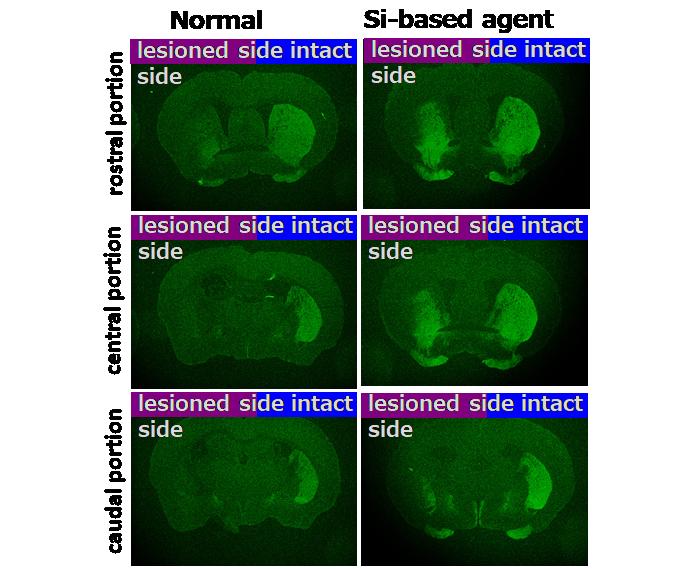Researchers from Osaka University develop a novel dietary silicon-based antioxidant agent with renoprotective and neuroprotective effects

Credit: Osaka University
Osaka, Japan – Oxidative stress is the result of reactive oxygen species (ROS) generation, and can be damaging to cells and tissues. In a new study, researchers from Osaka University developed a novel dietary silicon (Si)-based antioxidant agent that suppressed the development and progression of kidney failure and Parkinson’s disease in rodents.
ROS are generated as a result of metabolism and the immune response, but also during certain disease processes, contributing to continued tissue damage. Chronic kidney disease and Parkinson’s disease are among those diseases that have been shown to result from oxidative stress. Although ROS encompass several different molecules, not all ROS are alike. While Hydroxyl (OH) radicals are highly damaging to tissues through their effect on cells and DNA, others, like hydrogen peroxide and superoxide anions, are important components of the normal immune response.
“Eliminating only hydroxyl radicals is important to avoid disrupting normal physiological processes,” says lead author of the study Yuki Kobayashi. “Previous attempts to do so, like taking in hydrogen-rich water or breathing in hydrogen-containing air, have shown limited results. We wanted to develop a new dietary agent that efficiently enables the elimination of damaging hydroxyl radicals.”
To achieve their goal, the researchers produced a novel Si-based agent from Si powder. Because the agent is taken by mouth, the researchers first evaluated the efficacy of the agent in an environment similar to that in bowels, that is, a pH of 8.3 and at 36°C. 1g of the new agent was able to generate 400 ml of hydrogen in 24 hours, which is the equivalent of drinking 22 liters of hydrogen-rich water. The new agent thus enabled the continuous production of high amounts of an OH-eliminating molecule.
But was it sufficient to protect tissues from being damaged by ROS? To address this question, the researchers turned to animal models of chronic kidney disease and Parkinson’s disease. When they fed rats who had 5/6 of their kidneys removed with the Si-based agent, kidney function was preserved and tissue levels of oxidative stress as well as inflammation were significantly lowered, as compared with those of control animals. Similarly, when they fed animals with Parkinson’s disease with the Si-based agent, degeneration of neurons responsible for the disease was significantly attenuated.
“These are striking results that show that our Si-based agent is effective in preventing the progression of chronic kidney disease and Parkinson’s disease in well-established animal models,” says corresponding author Shoichi Shimada. “Our findings could provide new insights into the clinical management of patients with these diseases, for which currently no curative approach exists.”
###
The article, “Renoprotective and neuroprotective effects of enteric hydrogen generation from Si-based agent,” was published in Scientific Reports at DOI: https:/
About Osaka University
Osaka University was founded in 1931 as one of the seven imperial universities of Japan and now has expanded to one of Japan’s leading comprehensive universities. The University has now embarked on open research revolution from a position as Japan’s most innovative university and among the most innovative institutions in the world according to Reuters 2015 Top 100 Innovative Universities and the Nature Index Innovation 2017. The university’s ability to innovate from the stage of fundamental research through the creation of useful technology with economic impact stems from its broad disciplinary spectrum.
Website: https:/
Media Contact
Saori Obayashi
[email protected]
Original Source
https:/
Related Journal Article
http://dx.




